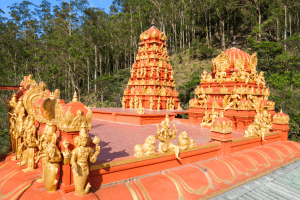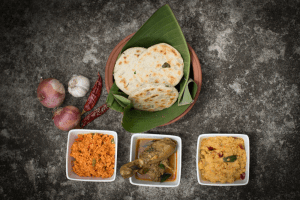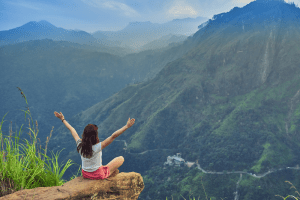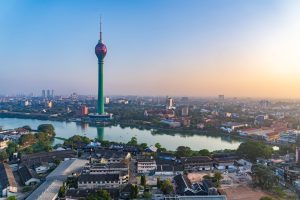Imagine the perfect moment: standing before a cascading waterfall, enveloped by emerald tea gardens and misty mountains, with scarcely another soul in sight. This feeling of serene discovery is the magic waiting for you in Sri Lanka’s hidden corners! The island, often called the “Pearl of the Indian Ocean,” is a land blessed with over 400 waterfalls an incredible number for its modest size. Many of these remain beautifully undiscovered, tucked away in dense forests, nestled between rolling tea estates, and hidden along remote jungle trails.
In this ultimate guide, we’ll take you on a journey to explore the island’s most enchanting secret waterfalls, focusing on the legendary Lover’s Leap Waterfall and the tranquil Ellewala Waterfall. Get ready for breathtaking views, refreshing natural swims, and unforgettable adventures that go far beyond the typical tourist experience!
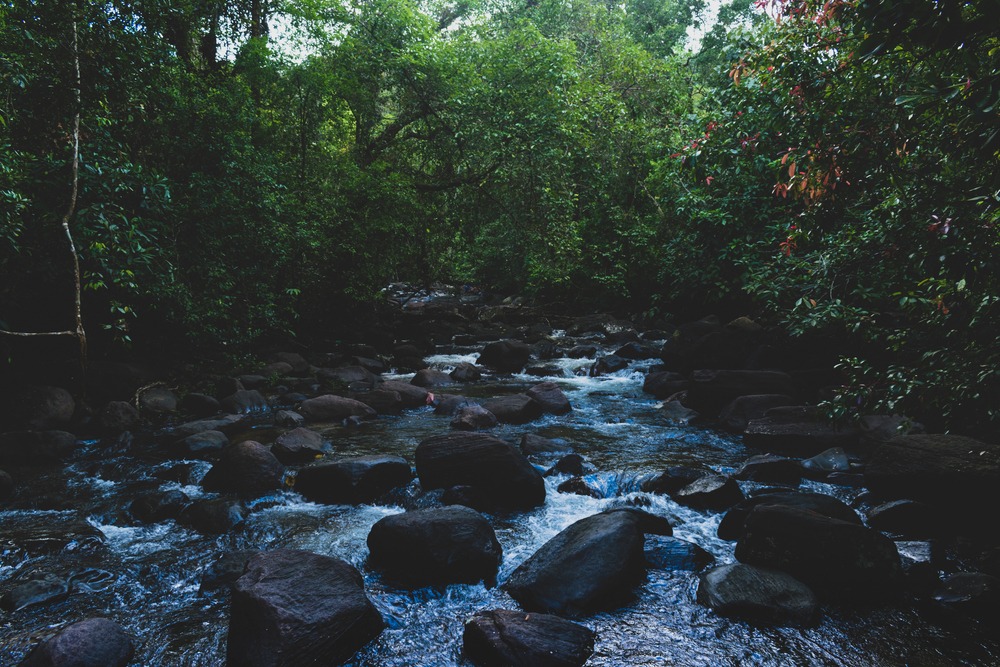
Why Sri Lanka is the Land of Waterfalls
Sri Lanka boasts a staggering collection of more than 400 documented waterfalls. This remarkable abundance stems from the country’s unique tropical geography: the steep central highlands capture vast amounts of moisture, tropical monsoon rains deliver consistent water flow, and the island’s lush vegetation holds the moisture, creating the perfect conditions for spectacular cascades.
While some waterfalls, like Bambarakanda Falls, tower dramatically at over 200 meters, many others are intimate, gentle flows hidden deep within the landscape. The true beauty of Sri Lankan waterfalls lies in their diversity and accessibility. Though some require a dedicated hike, others can be viewed from a roadside. Most importantly, many remain pristine and relatively unknown, accessible only through challenging hiking trails or with the guidance of locals who have treasured these spots for generations.
The Magic of Hidden Cascades
There’s something truly special about discovering a waterfall that isn’t overrun with crowds and tourist shops. Hidden waterfalls offer an authentic, intimate connection with nature that popular tourist spots simply can’t match.
The journey itself becomes as rewarding as the destination. You might trek through fragrant tea gardens where workers offer a friendly greeting, cross simple wooden bridges over rushing streams, and follow ancient paths that wind through dense forest canopy. Along the way, you could encounter vibrant bird species, playful monkeys, or the tracks of elusive small mammals. These secluded locations are often steeped in rich folklore, carrying tales of ancient royalty, forbidden love, and mystical treasures passed down through the ages. The tranquility you’ll experience, with only the sound of falling water and rustling leaves, creates moments of pure peace that are hard to find elsewhere.
Among all of Sri Lanka’s secluded gems, two waterfalls stand out for their unique charm: the romantically tragic Lover’s Leap Waterfall and the blissfully calm Ellewala Waterfall.
Lover’s Leap Waterfall: A Story of Romance and Tragedy
Located in the cool highlands near the charming town of Nuwara Eliya, Lover’s Leap Waterfall captures both the eye and the heart. This approximately 30-meter cascade plunges dramatically down a rugged cliff face, often shrouded in a beautiful mist.
The waterfall’s evocative name comes from a poignant local legend: it is said that two young lovers from different social classes, forbidden to marry, chose to leap together from the cliff rather than endure life apart. Today, the spot is visited not just for its stunning natural beauty but also as a romantic destination. The water flows through a landscape of rolling tea estates and pine-covered hills, creating postcard-perfect scenery at every turn.
Key Reasons to Visit Lover’s Leap:
- Romantic Setting: The emotional legend and stunning natural backdrop make it a meaningful spot for couples.
- Scenic Hiking: A moderate 30-minute trail rewards you with panoramic valley views and glimpses of local tea pickers at work.
- Peaceful Vibe: This spot remains a hidden gem, allowing for intimate moments away from the crowds of Nuwara Eliya’s more famous sites.
- Cultural Context: Local guides can share fascinating insights into the area’s tea heritage and colonial history.
Top Tips for a Great Visit:
- Best Time: December to March generally offers dry trails and clearer skies.
- Footwear: Sturdy hiking boots are essential, as some sections of the trail cross rocky or uneven terrain.
- Photography: The early morning light (7–9 AM) provides the most atmospheric conditions for capturing the waterfall’s misty spray.
Ellewala Waterfall: A Quiet Sanctuary for Swimming
If Lover’s Leap embodies drama and romance, Ellewala Waterfall is the definition of pure tranquility. This lesser-known cascade flows gently through a secluded forest setting, creating beautiful, natural pools of crystal-clear water that practically beg visitors to take a refreshing dip.
Its relatively easy accessibility makes it a wonderful choice for families, while its pristine, undeveloped surroundings satisfy nature enthusiasts looking for a true escape. Unlike some of Sri Lanka’s powerful, thundering waterfalls, Ellewala maintains a gentle, almost meditative flow that soothes the soul. The surrounding forest teems with life colorful butterflies, exotic birds, and ancient trees create a living sanctuary that feels miles away from the chaos of modern life.
Why Ellewala is a Must-See:
- Swimming Paradise: The natural pools are generally considered safe, clean, and wonderfully cool perfect for hot tropical days.
- Family-Friendly Access: The trail is short and easy, making it accessible for children and older visitors.
- Unspoiled Beauty: Minimal tourist development means you experience nature in its most authentic, unspoiled form.
- Picnic Spot: Flat rocks and shaded areas near the base provide ideal spots for a relaxing outdoor meal.
Tips for Visiting Ellewala:
- Gear: Bring swimwear, towels, and waterproof bags for electronics.
- Respect Nature: Practice “Leave No Trace” carry out all trash and avoid using soap or shampoo in the natural pools.
- Safety: Check weather forecasts before visiting; be aware that flash floods can occur quickly during heavy rains.
- Timing: Weekday mornings are best for solitude; weekends may see local families enjoying the spot.
More Hidden Waterfalls to Explore Across the Island
Beyond these two featured gems, Sri Lanka’s landscape is dotted with countless other spectacular cascades worth the trek:
- Bambarakanda Falls: Standing at an awe-inspiring 263 meters, this is Sri Lanka’s tallest waterfall. Located near Belihuloya, the moderate hike through pine forests is a rewarding effort for the spectacular view.
- Dunhinda Falls: Its name translates to “mist-laden,” perfectly describing how this 64-meter waterfall creates a cloud-like spray. A manageable one-hour trail leads to a viewing platform.
- Bomburu Ella: Near the popular town of Ella, this multi-tiered waterfall offers a slightly more challenging adventure, flowing over several rocky levels and providing unique photographic opportunities.
- Ravana Falls: Named after the legendary demon king from the Ramayana epic, this 25-meter cascade offers easy access from the main road while maintaining its natural charm.
- Kirindi Ella: Deep in jungle territory, this waterfall comes with fascinating local folklore about hidden treasures. The natural pool at its base is excellent for swimming.
- St. Clair’s Falls: Known as the “Little Niagara of Sri Lanka,” this impressive twin-stream waterfall near Talawakele is best viewed from the road or by walking down to the base, where you’re surrounded by tea-covered hills.
- Bopath Ella: Uniquely shaped like the sacred Bo leaf (bodhi tree), this waterfall near Ratnapura combines cultural significance with natural beauty.
Each of these waterfalls tells its own story through unique geological features, local legends, and the natural ecosystems that have evolved around them over millennia.
Planning Your Sri Lankan Waterfall Adventure
Discovering the island’s secret waterfalls requires preparation, respect for nature, and a healthy sense of adventure. Here is how to make your exploration both safe and rewarding:
Essential Preparation:
- Hire Local Guides: Experienced local guides know the safest, less-traveled routes, the best viewing times, and can share rich cultural stories that enhance your experience. They are crucial for safety and also help support local communities.
- Use Technology (Wisely): Download offline maps before venturing into remote areas, as mobile signals can be unreliable. GPS coordinates are helpful but always verify your route with locals.
- Timing Your Visit: The period from December to March generally offers the best combination of manageable water flow and dry, safe hiking trails. For maximum water volume, visit immediately after the monsoon season (May to September), but be aware of slippery conditions.
- Gear Up: Essential items include sturdy waterproof hiking boots, plenty of drinking water, energy snacks, insect repellent, sunscreen, a basic first-aid kit, and waterproof bags for electronics.
Safety and Responsibility:
- Safety First: Never swim alone, always check water conditions before entering pools, and be extremely careful on slippery rocks. Avoid visiting during or immediately after heavy rains when flash floods are a real risk.
- Respect Local Culture: Dress modestly, especially when passing through villages. Always ask for permission before photographing people and do not disturb religious or historical sites.
- Leave No Trace: Uphold environmental responsibility. Carry out all your trash and leave the area exactly as you found it to preserve its pristine condition.
Why Visit Hidden Waterfalls? The Rewards are Profound
The allure of hidden waterfalls goes far beyond just getting a great picture. These natural sanctuaries offer profound benefits for the traveler:
- Escape Mass Tourism: Experience a sense of solitude and peace that crowded attractions can’t provide. This is where you can truly connect with the raw, untamed nature of Sri Lanka.
- Physical and Mental Wellness: Hiking to a remote waterfall provides excellent exercise, while the meditative sound of flowing water is a proven stress reducer, promoting mindfulness and mental clarity.
- Pristine Swimming: Cool off in clean, refreshing water that is often completely private a true luxury in the tropical heat.
- Unique Memories: These off-the-beaten-path experiences create stories you’ll share for years to come, resulting in far more memorable trips than standard tourist itineraries.
FAQs About Sri Lanka’s Hidden Waterfalls
Q: How many waterfalls are there in Sri Lanka?
A: Sri Lanka has more than 400 documented waterfalls across the island, ranging from towering cascades to intimate forest streams.
Q: Where is Lover’s Leap Waterfall located?
A: Lover’s Leap is situated near Nuwara Eliya in the central highlands, accessible via a moderate 30-minute hike.
Q: Can you swim at Ellewala Waterfall?
A: Yes! Ellewala features natural pools that are generally safe for swimming. Always check current water conditions with locals and avoid swimming after heavy rains.
Q: When is the best time to visit hidden waterfalls?
A: December to March offers the best combination of safe, dry trails and good water flow. For maximum water volume, visit October–November after the monsoons.
Q: Are hidden waterfalls safe to visit?
A: They are safe when approached responsibly. Always travel with a local guide, wear proper footwear, and never swim alone.

Final Thoughts: Your Adventure Awaits
Sri Lanka’s hidden waterfallslike the romantic Lover’s Leap and the tranquil Ellewalaare precious natural treasures unmatched by standard tours. They offer adventurers endless chances to connect with nature, challenge themselves, and create lasting memories.
To preserve these gems, explore respectfully: prioritize safety, support local communities, and follow Leave No Trace principles. By doing so, you ensure future travelers can experience their unspoiled magic.
Ready for your journey? Whether you seek romance, family fun, or high-octane hikes, these cascades promise more than photos. They offer transformation: a chance to slow down, reconnect, and find meaningful travel. Book your expert tour today and discover paradise!
